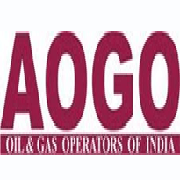-
Vedanta looks to raise captive power generation capacity by 1,200 Megawatt
Metals and mining conglomerate Vedanta Ltd is looking at increasing its captive power generation capacity by 1,200 megawatt (MW) amid rising production. The company is considering setting up 350-MW super-critical units in joint ventures at its different production bases in the country.
“We are evaluating various models and one of them being looked at includes offering excess land at our manufacturing units as equity in setting up thermal power units under joint venture with third parties,” Ajay Dixit, chief executive officer of Vedanta’s power business, said.
Vedanta has an electricity generation capacity of nearly 9,000 MW of which 200 MW comes from wind and the rest from thermal. Nearly 60% of the 9,000 MW is for captive use, the remaining is sold in the market.
“At present, the average utilisation of commercial power generation capacity at Vedanta Ltd is a shade above 70% while the utilisation of captive power units are more than 90%. We have estimated that an additional 1,200 MW of generation capacity would be required to cater to the increased production capacities,” Dixit said.
Vedanta is looking at various models for procuring quality power supplied steadily at competitive rates.
“Apart from the joint venture model, other models being looked at include entering into long-term power purchase agreements with power producers that would set up their plants and supply us the power. Alternatively, we would set up our own generation capacities at manufacturing bases,” he said.
Vedanta has already invited an expression of interest and is evaluating the pros and cons of various models. Around 3,554 MW of the total capacity, meant for commercial sale, is running at around 70%.
The remaining 5,194 MW is for captive usage, where capacity utilisation has risen with the rise in production. In Jharsuguda in Odisha, Vedanta has a power generation capacity of 3,615 MW of which 600 MW is for commercial sale while the rest is for captive use. The commercial capacity utilisation is around 80%.
At the Talwandi Sabo Power project in Punjab, the entire capacity of 1,980 MW is for commercial sale on a long-term basis. The project recently saw a dip in power sales but capacity utilisation has now risen to 90%.
At Balco, Vedanta has an installed capacity of 2010 MW of which 600 MW (2 x 300 MW) is for commercial sale while the rest is for captive use.
At Hindustan Zinc Limited, the total installed capacity is 748 MW of which 274 MW is generated from wind and is sold in the market. The remaining 474 MW is for captive usage.
There is an additional 100 MW at Malco for commercial sale and 160 MW at Tuticorin for captive usage. Greg Mancz Authentic Jersey
Share This



























































































